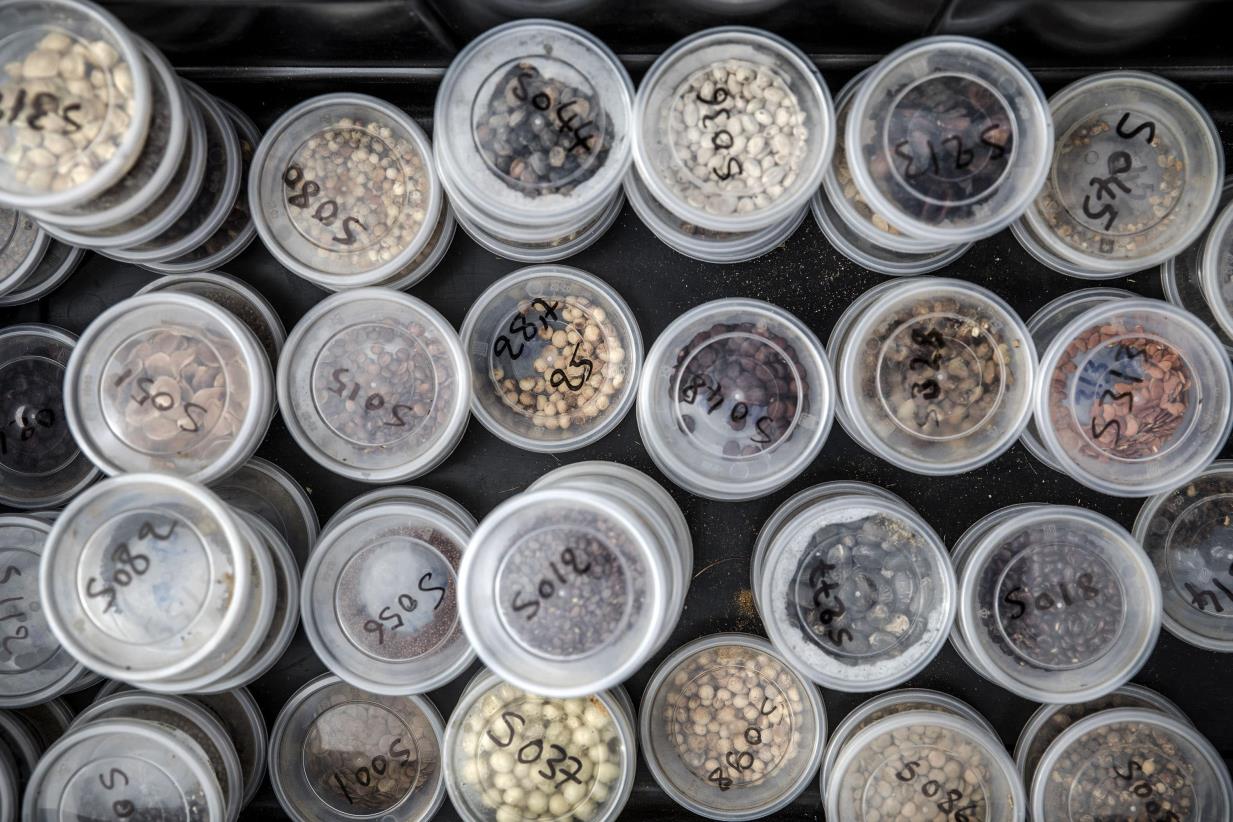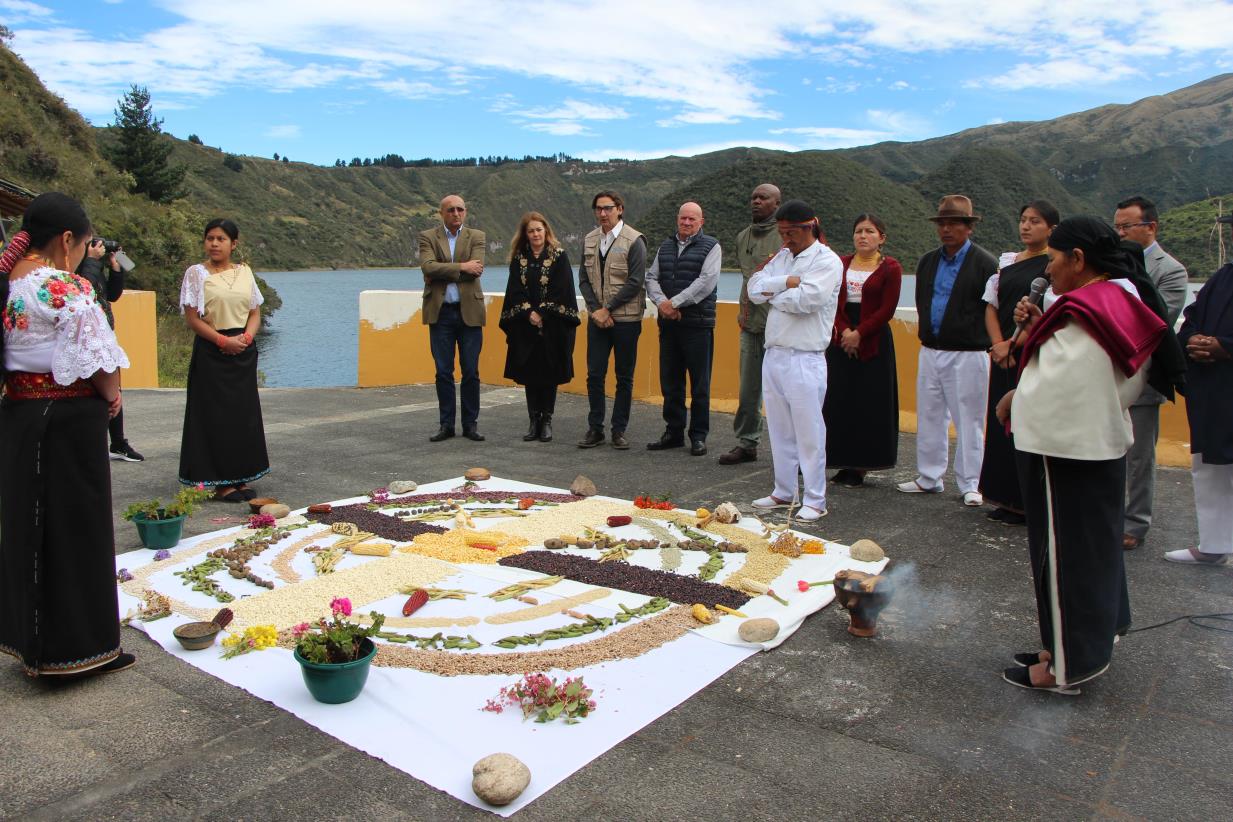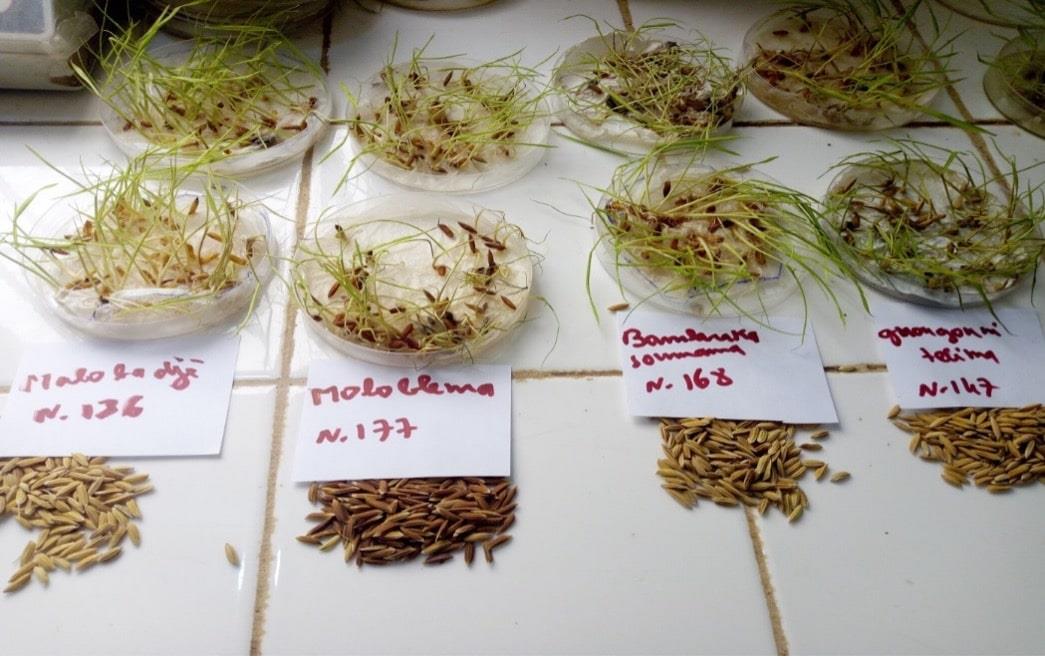
Seed biodiversity: The life insurance of our food production
Protecting and preserving food biodiversity for resilient agrifood systems
Thousands of plant species and varieties that fed our ancestors are already extinct, and we are losing more every day. Diversity is our food’s life insurance. ©FAO/Luis Tato
17/05/2022
Humans rely on a shockingly low number of plants for the majority of our daily calories. In fact, of the thousands of fruit and vegetable species cultivated for food, fewer than 200 make up a substantial part of food produced globally. But what if climate change, invasive species, pollution, city sprawl or overuse of land cause these species to weaken, lowering their ability to produce or survive into the future?
Thousands of plant species and varieties that fed our ancestors are already extinct, and we are losing more every day. Diversity is our food’s life insurance. It is crop biodiversity that keeps our food systems strong and resilient against these real and menacing threats.
Indigenous and local communities around the world are the major conservationists of agrobiodiversity. They have deep, traditional knowledge of different crop varieties and how to farm them. Yet, these communities themselves are often vulnerable, living in areas particularly exposed to climate change or subject to degraded resources. The Benefit-sharing Fund , established through the FAO International Treaty on Plant Genetic Resources for Food and Agriculture, supports these farmers in developing countries to safeguard and use plant genetic diversity for food security and help these communities cope with climate change. The collaboration is also a vital way of preserving indigenous knowledge and promoting access and exchange of resilient crop varieties, adapted to their needs.
Here are five examples of ongoing Benefit-sharing Fund projects and the importance of seed biodiversity.
1. Protecting native crop varieties in Ecuador
In the district of Cotacachi in the Ecuadorian Andes, family farming, mostly led by women, is the main source of food and income. The area is a microcenter of agricultural diversity due to its traditional crops adapted to the Andean high altitudes, and it was recently designated as an FAO Globally Important Agricultural Heritage System. Despite the wide availability of natural resources, the 45 indigenous communities in this area are contending with climate change and land degradation, deteriorating the availability of native crops. Through the Union of Farmer and Indigenous Organizations of Cotacachi, the Benefit-sharing project is working with these communities to address the loss of local crop diversity and identify varieties that are adapted to climate change.
Two bio-knowledge centres are being established to facilitate access to locally adapted seeds, and 30 farmers are being trained as seed producers. The project is benefitting more than 1 500 farmers and reintroducing native and better-adapted plant species for household consumption and commercialization.


Left/Top: In Ecuador, two bio-knowledge centres are facilitating access to locally adapted seeds. ©Unión de Organizaciones Campesinas e Indígenas de Cotacachi (UNORCAC) Right/Bottom: Drought- and witchweed-resistant cowpea varieties are helping ensure food security in Ghana. ©FAO/Peter DiCampo
2. Developing drought and disease-resistant cowpea varieties in Ghana
The cowpea, recognized for its nutritional benefits and ability to grow in sandy, semi-arid soils, is an essential crop for the communities living in the coastal savannahs of Ghana. It is an affordable, protein-rich food relied on by over 70 percent of the country’s population. However, the parasitic witchweed (Striga gesnerioides) is severely threatening its production, leading to 80-100 percent of yield losses.
Through the University of Cape Coast, the Benefit-sharing Fund carried out a detailed assessment of different types of cowpea that led to the development, registration and release of seven new drought-tolerant, striga-resistant cowpea varieties. In an approach that brought together researchers, scientists, farmers, breeders, technicians, producers and governmental officials, these varieties are now being cultivated and consumed by over 1 000 farmers and their families with an average increase in income of 45 percent.
3. Uncovering resilient taro species in Malaysia
Taro is a root vegetable that has been used widely for food, fodder and medicinal purposes throughout Africa, South Asia and Oceania for thousands of years. Changing climatic conditions and disease have threatened the production of taro, but FAO’s Benefit-sharing project is working with farmers, through the Malaysia Agriculture Research and Development Institute, to strengthen the conservation and documentation of resilient taro varieties in Malaysia and other countries in Southeast Asia.
The project is establishing model farms and 20 Farmer Field Schools to test these new varieties. Five community seed banks are also being established so the farmers can guarantee their seeds are protected and can be shared with neighbouring communities.
200 small-scale taro farmers are involved in the project and will receive training on practices and technologies to process, store, transport and market this important crop.

The Benefit-sharing Fund has helped communities identify local rice varieties that are high-yielding while also being tolerant to drought and excess water. ©Institut d’Economie Rurale (IER)
4. Reinstating local rice varieties in Mali
Rice and millet are staples of the Malian diet, but with 80 percent of rainfed rice cultivation seriously affected by drought, yields have drastically reduced.
The Benefit-sharing Fund has been working with local producers and communities in 69 villages through the Institut d'Economie Rurale to preserve 266 local rice varieties and identify which species will give maximum output while tolerating drought and excessive water submersion. Farmers are being given greater access to these varieties, and these seeds were also recently sent to the Svalbard Global Seed Vault, a secure seedbank in the Norwegian arctic that acts as a failsafe for seed biodiversity in the case of damage or loss of national or international seed collections.
5. Improving local varieties of wheat and barley in Morocco
Durum wheat and barley are among the staples in Morocco, Tunisia and Algeria, but these countries have come to rely on imports as their own crops have become increasingly affected by climate change, pests and disease. High temperatures and drought have led to a build-up of salinity in the soil and groundwater, making it difficult for certain plant species to survive.
Through ICARDA – Science for Resilient Livelihoods in Dry Areas and local partners, researchers and scientists have succeeded in producing disease-free, climate resilient plants and rapidly multiplying rare plant genotypes through in vitro culture techniques. In these three countries, the results are being disseminated between national breeding programmes and are already helping hundreds of farming communities and the wider population.
On the International Day for Biological Diversity, 22 May 2022, the International Plant Treaty is launching a Call for Proposals for the fifth funding cycle of the Benefit-sharing Fund. The Call is open to a consortium of farmers, researchers and others that will be working on innovations to enhance crop diversity management in farmers’ fields and local value chains.
Related links
The biodiversity of our fruits and vegetables is depleting at an alarming rate with devastating effects on the future of our food production. By supporting the sustainable management of crop genetic resources in developing countries, the Benefit-sharing Fund has increased the food security and improved the livelihoods of more than 1 million people so far. Together with farming communities who are all too aware of the vital role these resources play in ensuring resilient agriculture, the Benefit-sharing fund is working to urgently preserve these living genetic resources. These seeds are resources we cannot afford to lose.
*This story is an update of one first published on 21 May 2021
Learn more

